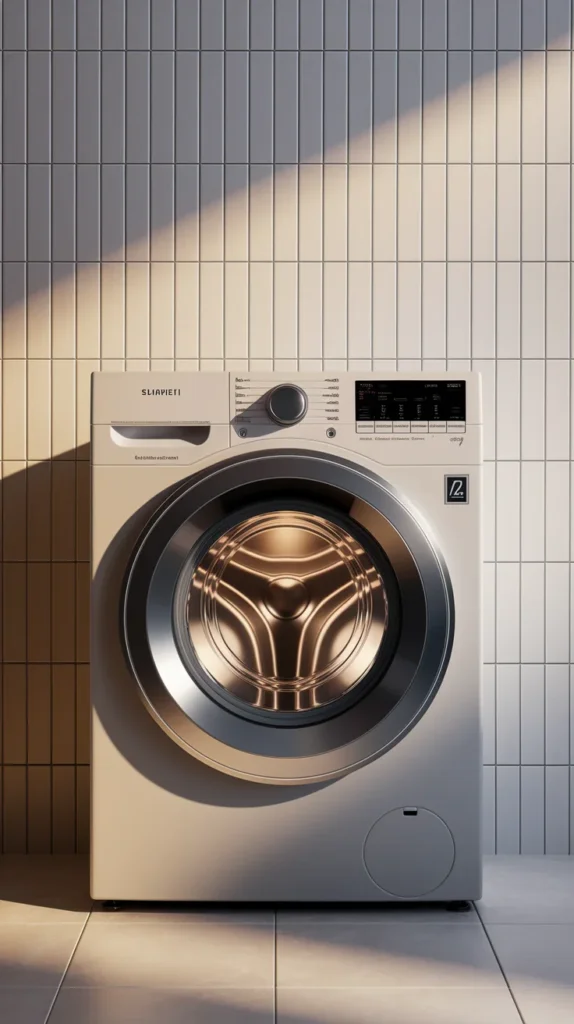In a world where energy conservation, smart technology, and sustainability are becoming increasingly important, the humble washing machine is undergoing a transformation. High-efficiency (HE) washers are evolving to meet the demands of eco-conscious consumers while delivering exceptional performance and convenience. Below are ten forward-thinking ideas that could define the future of high-efficiency washers.
1. Smart Wash Cycle Adjustments

Imagine a washer that thinks for you. By using sensors to detect load size, fabric type, and soil level, this washer would automatically adjust water usage, detergent amount, and cycle time. Not only does this save resources, but it also ensures your clothes come out cleaner and fresher every time.
2. Dual Drum System

Why wait to wash two separate loads? A dual-drum washer allows for simultaneous washing of different types of laundry. Whether you’re separating whites from colors or delicates from denim, this setup reduces the number of cycles you run—saving time, water, and electricity.
3. Eco-Friendly Self-Cleaning Cycle

Maintenance is often overlooked, yet essential for washer efficiency. A built-in eco-cleaning cycle uses steam or minimal water and a biodegradable cleaner to sanitize the interior after each load, preventing mold, odor, and detergent buildup without wasting precious resources.
4. Greywater Recycling

Water scarcity is a growing global issue. With an integrated greywater recycling system, your washer could filter and reuse water from previous rinse cycles for the next wash, dramatically reducing overall water consumption without compromising cleanliness.
5. AI-Powered Load Detection

Harnessing artificial intelligence, this washer analyzes the type and weight of clothes, adjusting its operations for optimal results. Connected to your smartphone, it can notify you of cycle completion, suggest maintenance, and even recommend washing schedules based on your laundry habits.
6. Solar-Powered Operation

Sustainability goes off-grid with solar-powered washers. Ideal for environmentally conscious users, this washer runs on solar energy, reducing your carbon footprint and saving on electricity bills. A built-in battery stores power for cloudy days, ensuring consistent performance.
7. High-Pressure Ultrasonic Cleaning

Say goodbye to stubborn stains with ultrasonic technology. By generating microscopic bubbles that penetrate fabric fibers, this method lifts dirt and grime without heavy water or detergent use—perfect for sensitive skin and tough laundry challenges alike.
8. Heat Pump Drying Integration3

Why use two machines when one can do it all? Heat pump technology allows washers to include a drying function without the high energy consumption of traditional dryers. It dries clothes gently and efficiently, preserving fabric quality and saving energy.
9. Minimal Water Wash Technology
The future of laundry may not involve much water at all. Advanced systems using steam, air, or innovative cleaning agents can freshen up clothes without a traditional wash. This is especially useful for lightly worn garments or delicate fabrics.

10. Quick Wash with Energy Saver Mode

Busy lives demand fast solutions. A quick wash mode powered by energy-efficient settings offers a great solution for lightly soiled laundry. These cycles can significantly reduce power and water consumption while still delivering great results in under 30 minutes.
Conclusion
The laundry room is undergoing a revolution. High-efficiency washers are no longer just a luxury—they’re becoming a necessity for households that value sustainability, convenience, and smart living. From AI-powered sensors to water-saving innovations and solar-powered designs, these cutting-edge ideas are paving the way for a more efficient and eco-friendly future.
As manufacturers continue to push the boundaries of technology and environmental responsibility, the washers of tomorrow will do more than just clean clothes—they’ll help clean up the planet, too.

